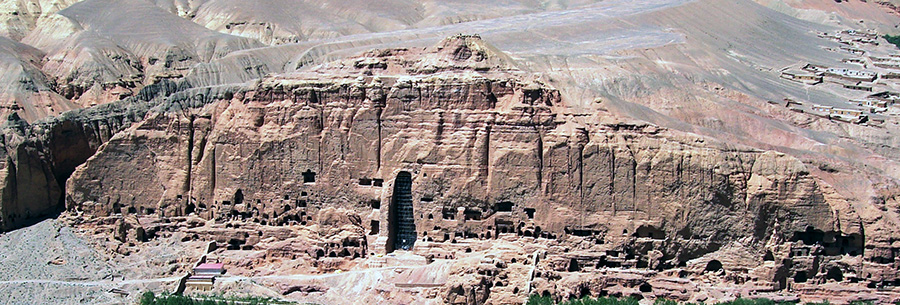![]()
As I mentioned in the notes on user-participation projects, one of the newer instances of crowdsourcing is public collaboration on historical transcription projects in which participants collaborate to transcribe a hand-written, manuscript document and make the document accessible digitally. In other words, you read a hand-written document online (usually it is a picture of the document) and then you type up the information as exactly as possible (usually in doc or PDF format). I think that is a great way to get people interested in working with history. One of the earliest, and largest, crowdsourcing efforts has been in operation at Ancestry.com where volunteers have been transcribing handwritten records, like the US census files, so that those records can be indexed and then searched by digital means. That work has been invaluable for genealogy researchers.
If you think about it for a moment, crowdsourcing is just the old "group project" from your history class scaled up to a larger, generally undefined group (the interested public), and these days, in almost all cases, that larger group is connected online. Crowdsourcing is characterized by its random nature; you really don't know who will become interested and choose to participate in your project. There will probably be professionals and amateurs collaborating.
I often assigned a specific historical document to a group of 4 or 5 students with the task to answer a specific question about the document; and the group uses their collective brain-power and knowledge to solve the problem. Crowdsourcing is really the same thing, and the crowd plays an important role on policing itself and making sure that its work is credible and reliable. When it comes to deciphering and transcribing some old handwritten document, it really helps to have a lot of people collaborating to make sure that the document is transcribed correctly and exactly. Believe me. That can be really hard sometimes because a person's handwriting can be very bad, and the document itself could be in poor physical condition.
Here is a bit of reading about transcription projects.
- Transcribing, Editing and Processing Guidelines (Provides some guidelines about working with manuscripts that the Minnesota Historical Society created)
- Konrad Lawson, Crowdsourcing Transcription: FromThePage and Scripto
- Krista McKracken, Transcription in a Digital World
- Stanford University, Spatial History Project, Crowdsourcing for Humanities Research
- Jan Zastrow, Crowdsourcing Cultural Heritage: 'Citizen Archivists' for the Future
Here are some possible transcription projects that you can participate in.
- Crowdsourcing History with links to projects such as those below.
- Wikipedia even has an entry with a list of active crowdsourcing projects.
- Making History, Transcribe (Library of Virginia)
- Smithsonian Digital Volunteers: Transcription Center
- National Archives Citizen Archivist
- 36 Great Examples of Crowdsourcing
- University of Iowa
- Crowdsourcing Transcription of the Papers of the War Department Using Scripto
- Transcribing Jeremy Bentham
- Dickens Journals Online
- Freedom on the Move (transcribing the ads owners and jailers posted about runaway and caught slaves and then attempting to match them up)
- Crowdsourcing Effort to Conserve Anti-Slavery Correspondence by the Boston Public Library
- BillionGraves.com
- Old Weather
- University of Virginia School of Law, Crowdsourcing History
- Notes from Nature: Transcribe Museum Records
- Nova Scotia Archives
- Historical Marker Database
- Shakespeare's World
- DIY history
- Distributed Proofreaders (checking the accuracy of public domain books)
- FamilySearch indexing is also a large-scale genealogical records project.
- Wikipdedia has a long list of crowdsourcing projects; most of which are not focused on history.
- Operation War Diary is more of a crowd-sourcing project than it is a transcription project, but it certainly has elements of transcription. The project is intended to mark-up diaries from World War I soldiers so that they can be shared online.
- There are more and more of these opportunities appearing all the time. Please find one to add to the list.
Here are some Virginia projects.
- Making History, done by the Library of Virginia
- Mapping the Fourth of July
- Alexandria Legacies
- Citizen Historians Wanted
Watch my video remarks on this assignment.
Here is your assignment.
After consulting with your instructor, participate in one of these crowdsourcing transcription projects (or find a different project to join). Then, after you have completed your work in the transcription project, write a one- or two-page paper in which you describe
- why you chose the project
- what exactly you were expected to transcribe in the project
- explain exactly what you did
- comment upon the transcription work that you did (did you find it easy, hard, challenging, interesting)
- what you did learn from your work
- how you think the project benefited (or didn't benefit) from your work
Here are the formal requirements for your paper.
- Must have an introduction and conclusion (each not to exceed three lines)
- May not exceed two pages
- One-inch margins
- Double-spaced
- Name and date at top left
- Proper English grammar, spelling and style usage
- For references, citations or footnotes, just put a URL in parenthesis.
- You may consider submitting a draft of your paper for feedback before submitting the assignment for a grade.
Your assignment should be submitted on Canvas.
